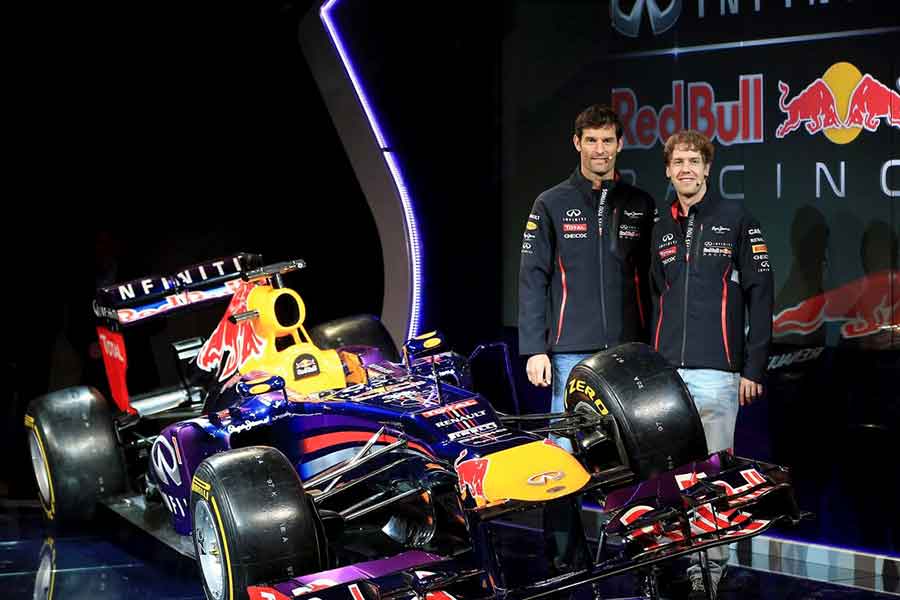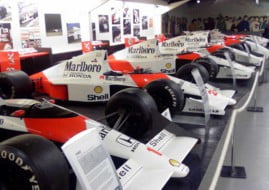Red Bull RB9 - The End of an Era
The Red Bull RB9 was the car that Sebastian Vettel drove in 2013 and won his fourth consecutive Formula 1 title. Red Bull Racing also won its fourth Constructors’ championship title in a row that year.
The Red Bull RB9 wasn’t a revolutionary car
After three consecutive ’doubles’ Red Bull Racing and Sebastian Vettel were eager to continue their winning streak and with the RB9 they were able to do so. The new Red Bull RB9 was an evolutionary car, mostly based on its predecessors. Technical regulations were almost unchanged and probably the biggest change for 2013 campaign was the introduction of new Pirelli tires, which is why the team had put in a lot of effort into optimizing the car for that change.
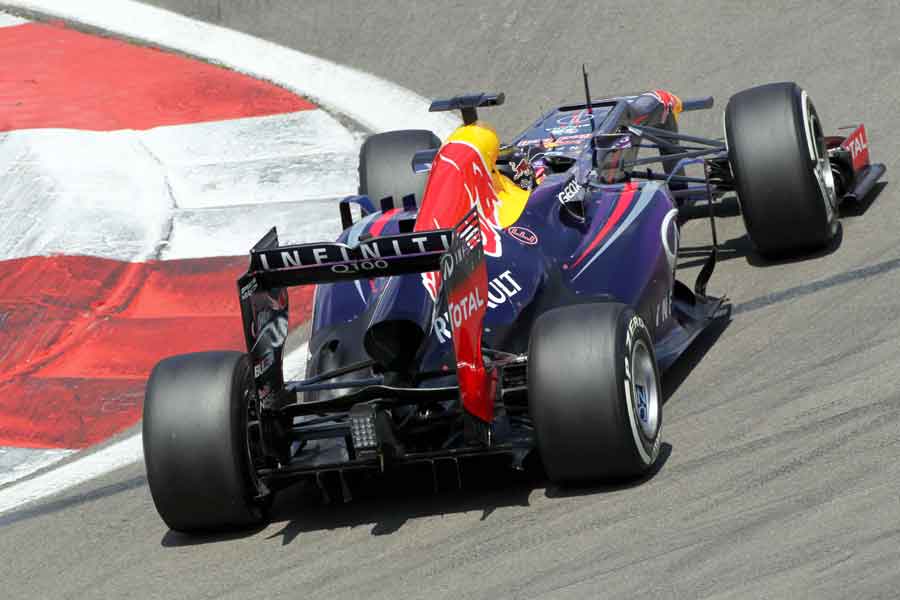
Red Bull RB9 was similar to its predecessor
Team Principal Christian Horner and his team of designers led by Adrian Newey as Chief Technical Officer, Rob Marshall as chief designer, and Peter Prodromou as Head of Aerodynamics again did a fine job because Red Bull RB9 was somewhat superior in 2013 Formula 1 season. The main changes on the new car were made in the rear end and they wanted to improve downforce. The front wing was strengthened considerably to meet more strict FIA regulations.
Driver line-up remained the same
The new car was launched in the first week of February 2013 at Jerez Circuit and it was clear that a lot of work still had to be done, especially after Ferrari looked like a fierce opponent. In the first half of the season Red Bull RB9 wasn’t as dominant, but in the second half, it was in the class of its own.
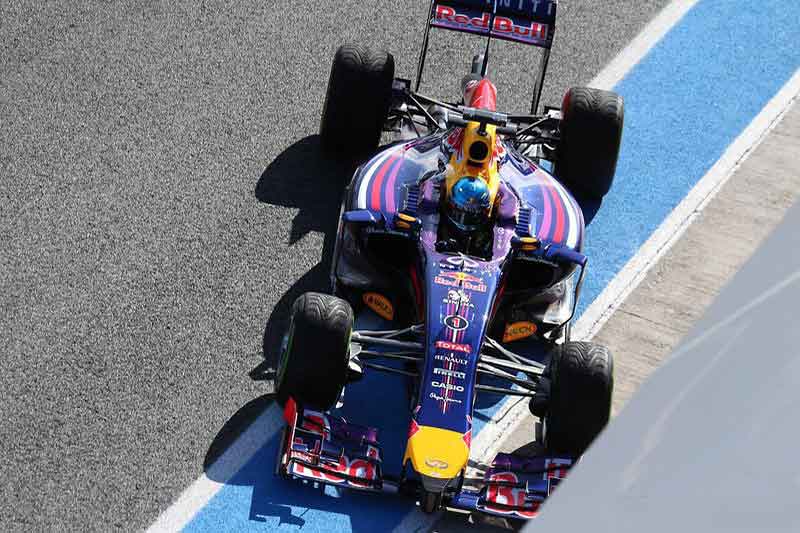
Red Bull RB9
For the fifth consecutive year, Sebastian Vettel and Mark Webber were the drivers and led the team to another Constructors’ championship title. German driver won his fourth title in a row, while the Australian finished 3rd in his last year in the series.
Red Bull RB9 scored four wins in the first half of the season
The new car debuted in the Australian Grand Prix. The outcome was slightly below the expectations because Vettel was 3rd and Webber 6th. However, the following race was much better. Vettel won Malaysian Grand Prix, while Webber finished 2nd which was the first out of four 1–2 finishes scored by Red Bull that year.
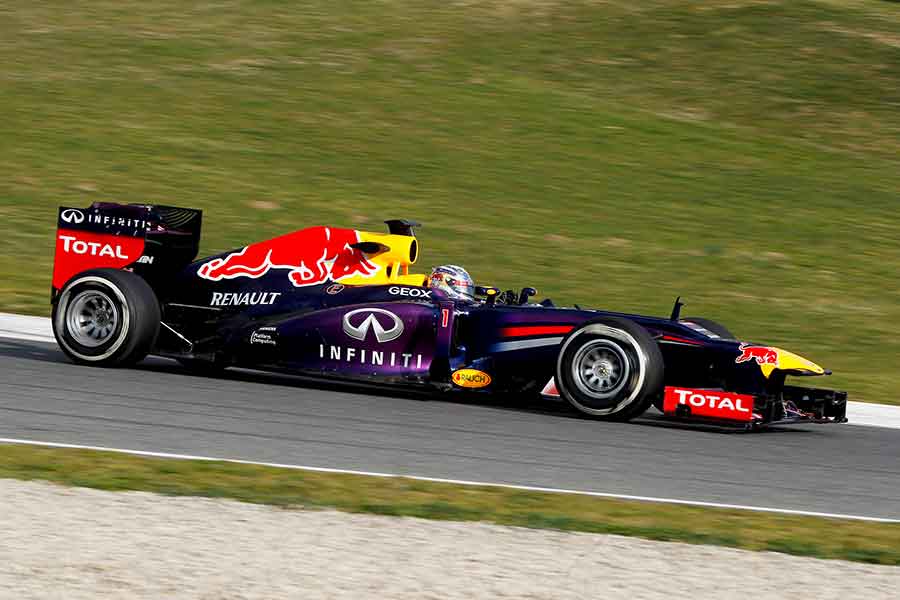
In the first half of 2013, Red Bull RB9 wasn’t as dominant
Reigning champion scored second win of the season in Bahrain, while in Monaco, Vettel and Webber finished 2nd and 3rd respectively. Before the summer break, Vettel won the races in Canada and Germany, and finished 3rd in Hungary, while Webber’s best result was the 2nd place in the British Grand Prix. Interestingly, Vettel’s only retirement in 2013 was at Silverstone, due to a gearbox failure.
After the first half of the season, Vettel topped the standings with an advantage of 38 points to the 2nd placed Kimi Raikkonen, while Fernando Alonso on 3rd position was 39 points behind. In the Constructors’ championship, Red Bull Racing had strong 69 points advantage to its closest rival Mercedes.
Total domination after the summer break
Summer break has been good to both teams and Vettel was absolutely dominant in the last nine races of the campaign. The first race in the second half of the year was at Spa and Vettel scored his fifth victory in 2013. That was the beginning of the fantastic streak after he won all remaining races – in Italy, Singapore, Korea, Japan, India (where he clinched the title), Abu Dhabi, USA, and Brazil.
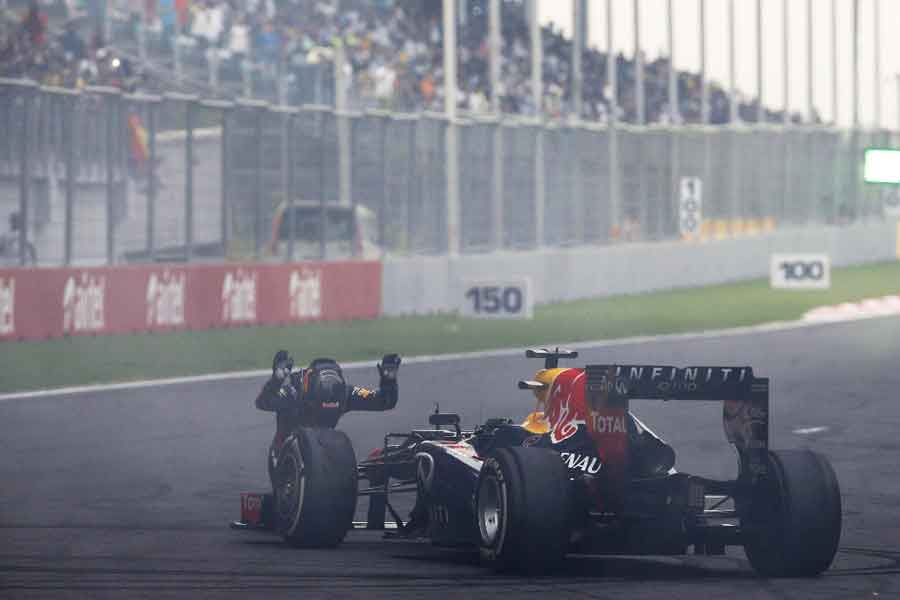
Sebastian Vettel after winning the Indian Grand Prix and clinching the 2013 F1 title with Red Bull RB9
On the other side, Webber was a good support to his teammate and collected valuable points for the team. His best results in the second part of the season were 2nd places in Japan, Abu Dhabi, and Brazil, as well as 3rd places in Italy and the US. At the end of the campaign, Australian driver was 3rd in the standings, behind Ferrari driver Fernando Alonso.
What do the numbers say?
Red Bull Racing won the Constructors’ championship having 236 points more than the runner-up Mercedes. The Red Bull RB9 won 13 out of 19 races in 2013, scored a total of 24 podiums, and also had 11 pole positions and 12 fastest laps.
Red Bull RB9 technical specifications
| Chassis | Carbon fiber composite monocoque, carrying the Renault engine as a fully stressed member |
| Length | 5.200 mm |
| Width | 1.800 mm |
| Height | 950 mm |
| Weight | 642 kg, including driver and fuel |
| Wheelbase | 3.100 mm |
| Engine | Renault RS27-2013, 2.400 cc, V8 90°, naturally aspirated, longitudinally mounted mid-engine |
| Power | 750 bhp / 560 kW limited to 18,000 RPM with KERS |
| Transmission | 7-speed semi-automatic hydraulic paddle shift gearbox |
| Suspension | Aluminium alloy uprights, carbon-composite double wishbone with springs and anti-roll bar, multimatic dampers |
| Brakes | Brembo calipers, carbon discs, and pads |
| Electronics | MESL standard control unit |
| Tires | Pirelli |
| Fuel | Total Group |
Video – Red Bull RB9 test, 2013
Photo: redbullracing.com, f1technical.net, motortrend.com, conceptcarz.com,


